|
ERETZ Magazine
|
Stayput Lower
Galilee
A distinct line separates the
Upper and Lower Galilee – it is the grand cliff of the Beit Hakerem
Valley that lifts the terrain another 300 meters above sea level.
The Lower Galilee is a land of open valleys, olive orchards, and
rolling hills.
The Lower Galilee is a land of four valleys separated by five
moutain ranges. The valleys, running from east to west, are very
different from each other. The northern one, the Valley of Beit
Hakerem, is a land of ancient olive groves, with hundreds of age-old
trees dotting the valley. The Sakhnin Valley, south of it, is a
valley of fertile fields and home to a large Arab population, which
lives in villages and towns that have retained their names since
Roman times.
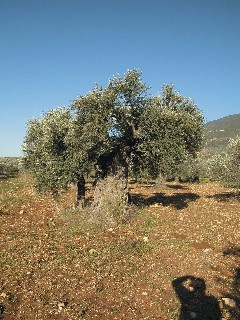 Next
is the large expanse of the Valley of Beit Netofa. In rainy winters,
the flat expanse turns into a lake, putting the fields under water
for a few months. This land is famous for its watermelons; they like
these conditions of waterlogged fields in winter and dryness in
summer. Next
is the large expanse of the Valley of Beit Netofa. In rainy winters,
the flat expanse turns into a lake, putting the fields under water
for a few months. This land is famous for its watermelons; they like
these conditions of waterlogged fields in winter and dryness in
summer.
In the mountains between the Beit Netofa Valley and the Valley of
Sakhnin lies Yodfat, the town where Josephus Flavius, the Jewish
historian and commander of the Galilee in the first century, set up
his headquarters. Beseiged by the Romans, Yodfat fell after a
protracted siege. Josephus gave himself up to the Romans and served
for the rest of his life as the historian of the Flavian family, the
family of the emperors Vespasian and Titus.
South of the Beit Netofa Valley is the Valley of Turan. At the
meeting point of the two valleys stands the town of Sephoris (Zippori),
which was the capital of Herod’s Kingdom of Galilee before he built
Tiberias. Sephoris was the home of Rabbi Yehuda Nasi, the redactor
of the Mishne. The wealth of the city, which did not participate in
the rebellion of the Jews against the Romans, can be seen in the
opulence of its Roman mansions and the mosaics that decorated their
floors.
In the hills above Sephoris is the small hamlet of Nazareth. It was
an insignificant village in the days that Herod was rebuilding
Sephoris. Joseph and Jesus, a carpenter and his son, might have even
been among the many skilled professionals who worked on the great
building project.
As you make your way up the hill from Sephoris to Nazareth, you pass
by Cana of New Testament fame and Mashad – the biblical Gat Hefer –
the town where the prophet Jonah was born. It was a long distance
from Gat Hefer to Jaffa, where Jonah set out for Nineveh from – so
long that an alternative site for Gat Hefer has been suggested on
the Coastal Plain.
(Back to top)
Nazareth
Start tour at Mary’s Well: The women of Nazareth are known for
their beauty. However, when travelers of the past watched the women
of Nazareth draw water from the well, it was obviously not only the
Nazarenes’ reputed comeliness that fascinated the pilgrims, but also
the thought that Mary herself might have drawn water from this very
well. Today, a modern fountain stands on the spot. The spring that
once fed it is located up the hill, northwest of the nearby Greek
Orthodox Church of Saint Gabriel.
Saint Gabriel: The oldest part
of the church is the arched section over the outlet of the spring.
This is a remnant of a Crusader structure that may have been used as
a wellhouse. The entrance to the church was constructed in 1767
over remains of a Crusader church. The paintings on the church walls
are the work of artists from Romania. Leave the church and walk
along the street leading to the city hall and the Moskubiyeh.
Moskubiyeh: This large building,
on which construction began in 1904, was a hostel for the numerous
Russian pilgrims who came to the Holy Land prior to the Russian
Revolution of 1917. The complex, which included a dining hall,
clinic, pharmacy, and hospital, served the townspeople as well as
visitors. At present, Nazareth’s municipal courthouse, post office,
and police department are ensconced in the building. Continue to the
Jarjura House, the first building on the lane ascending to the right
from the large parking lot.
Jarjura House: This typical
Nazareth mansion is named for the Arab family which built it. The
building boasts a typical enclosed courtyard and, even though the
first floor is presently home to carpentry shops and storerooms, it
still imparts some idea of the grandeur of houses constructed some
150 years ago in Nazareth. These buildings are the backbone of
Nazareth’s Old City. Continue up this picturesque lane, turning
right at the first turn, then right again. Look up to see a typical
Turkish-style balcony.
Salim a-Ras: The house with the
balcony originally belonged to prosperous Nazareth resident Salim a-Ras,
the local agent for the wealthy Beirut landowner Sursuk (from whom
early Zionists purchased lands in the Jezreel Valley). Today, it is
the home of the widow of Saif a-Din Zuabi, a longtime mayor of
Nazareth and member of Knesset. Return to the lane and continue to
the steps. Descend along them to Writers’ House.
Writers’ House: If the doors to
this center for art and music education are open, take a look around
inside. Across from the Writers’ House are the Greek Orthodox
bishop’s residence and offices. In the courtyard near the residence
is a charming church with beautiful icons. Continue along the alley
to the left of the square. Make your way to Synagogue Church.
Synagogue Church: This complex belongs to Nazareth’s Greek
Catholics. According to tradition, this is the location of a
synagogue in which Jesus once prayed. From here make your way to the
Basilica of the Annunciation.
Basilica of the Annunciation:
The huge Catholic basilica is built over a
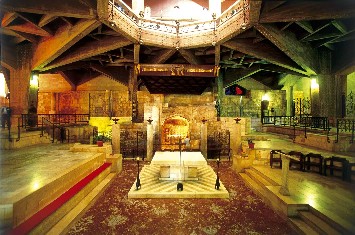 Crusader church built on
the site that is the traditional house of Joseph and Mary. The
ancient Crusader remains are above the remains of an early Christian
chapel both of which are encorporated into the huge church whose
upper level serves as the church of the local Catholic community. Crusader church built on
the site that is the traditional house of Joseph and Mary. The
ancient Crusader remains are above the remains of an early Christian
chapel both of which are encorporated into the huge church whose
upper level serves as the church of the local Catholic community.
(Back to top)
Kfar Tabor
The village of Kfar Tabor, at the foot of the famous Mount Tabor,
was founded in 1901 by 20 Jewish families. Most of them were the
children of farmers from Baron Rothschild’s settlements in the Land
of Israel. The village initially was named Mesha – like the adjacent
Arab village. In 1923, Zionist leader Menachem Ussishkin visited the
village and suggested that its name be changed to Kfar Tabor, after
the mountain that looms above it.
In 1908, guard work around the village was given to a Jewish
organization of guardsmen called Bar Giora. The local Arab guardsmen
were fired and Kfar Tabor become the second Jewish settlement to be
guarded by organized Jewish guards. This was the beginning of the
Jewish defense of the Land of Israel that would eventually lead to
the establishment of the Haganah and the Israel Defense Forces.
One of the interesting sites in the village today is the Farmers’
Courtyard, a museum that illuminates the life of the Jewish farmers
in the Galilee in the early twentieth century.
Other sites of interest in Kfar Tabor are the Marzipan museum and
the little winery next to it.
(Back to top)
Nofit
Located atop a hill in the Lower Galilee that rises to some 150
meters above sea level, Nofit has a marvelous view of Nahal Zippori,
the Galilee, and the Acre Valley to the south. A few residents
turned a service path into a hiking trail and dedicated it to Ohad
Zak, a Nofit native who was killed while serving in Lebanon.
A brown wooden sign reading “Ohad Trail – Around Nofit” marks the
beginning of the path. Date, olive, pomegranate, and almond trees
line the first section, which leads to the “Ladybug Lookout Point.”
The children of Nofit painted the stones here black with red dots,
inspiring the name. The lookout point provides a stunning view of
Nahal Zippori. The next lookout point is directly opposite Alil
Hill, which is almost completely encircled by Nahal Zippori. Its
only connection to the outside world is the saddle joining it to the
hill on which Nofit sits.
The final part of the path was chiseled into the rock by hand – a
safety rail protects hikers. Mediterranean trees grow along the
corridor to the left of the path. We rapidly reached steps leading
to the Nofit sports center. We made our way around the right side of
the basketball court and were back at the starting point.
(Back to top)
Owenallah Mansion
House number 14 on street 6089, adjacent to the Moslem cemetery,
is a modern building. In the past, this was the location of one of
the largest mansions of Nazareth, the home of the Owenallah family.
The mansion sprawled over 1,000 square meters. It was rented out in
1905 and became a British hospital. In 1923, the hospital relocated
and the family
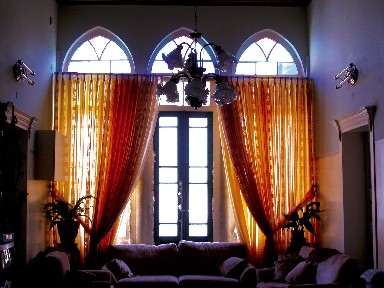 returned
to its home. During the Arab Revolt (1936-1939), the British accused
two family members of being ringleaders and blew up the house.
Today, family members live in the new building on the site. returned
to its home. During the Arab Revolt (1936-1939), the British accused
two family members of being ringleaders and blew up the house.
Today, family members live in the new building on the site.
The Owenallahs arrived in Nazareth as mercenaries. The head of the
family, Ali Aga, was in the service of Suleiman Pasha, the governor
of Acre. Ali and his sons participated in the Peasant Revolt. As a
result, he and two of his sons were executed. Once Ottoman rule was
restored, the family acquired vast tracts of land in the Jezreel
Valley. Three of the Owenallah family’s mansions are still standing
today.
(Back to top)
Itinerary
Day 1: Mount Meron
Drive down Route 866 to the Hananiya Junction. Take Route 85 west
through the ancient olive trees of the Beit Hakerem valley to Rama.
Turn right at the Rama Junction and take Route 864 up the cliff to
Beit Jann. Ask for directions to the Makam of Nebi Heidar at the
summit of Har Ha’ari. Drive along the dirt path to the east of the
Makam (a Druze sanctuary) to reach the summit of Har Ha’ari, which
offers a magnificent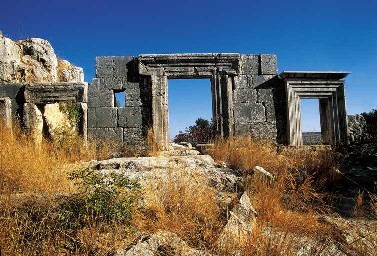 view of the Lower Galilee. Drive back to Route 864 and continue to
Peki’in. Walk through the alleys around the spring of this ancient
village. Continue on Route 864 to 89. Take Route 89 to Mount Meron.
Drive to the summit and take the 40-minute walk along the summit
trail for views of the Galilee, Golan, and Lebanon. Continue on
Route 89 to Jish and stop off at Jiscala for a taste of natural
Galilean foods. Continue on Route 89 to 866. Pass by Meron and the
tomb of Shimeon Bar Yohai and return to hotel.
view of the Lower Galilee. Drive back to Route 864 and continue to
Peki’in. Walk through the alleys around the spring of this ancient
village. Continue on Route 864 to 89. Take Route 89 to Mount Meron.
Drive to the summit and take the 40-minute walk along the summit
trail for views of the Galilee, Golan, and Lebanon. Continue on
Route 89 to Jish and stop off at Jiscala for a taste of natural
Galilean foods. Continue on Route 89 to 866. Pass by Meron and the
tomb of Shimeon Bar Yohai and return to hotel.
(Back to top)
Day 2: Kabbalah
Begin in Safed with a seminar on Jewish mysticism. Visit the
medieval synagogues and tour the Hassidic yeshivas and the ancient
cemetery. Take the road to Biriya forest. Follow the signs to the
grave of Raban Yonatan ben Uziel, a famous second-century mystic
whose grave, is a magnet for shiduch seekers. Drive to Bat Ya’ar for
dinner.
(Back to top)
Day 3: Sea of Galilee
Take Route 90 to Tiberias. Drive through the town and stop at the
Hamat synagogue just south of the town. Continue south on Route 90
to Kibbutz Deganiya and tour the Deganiya Courtyard, where the first
kibbutz was founded. Drive to Kibbutz Sha’ar Hagolan to visit the
small museum on prehistory. Drive to Ein Gev for lunch. Continue
north on Route 92 past the important Christian site of Kursi
commemorating the healing of the Gerasene demoniac. Continue north
to the junction with Route 87. Take Route 87 west. Cross the Jordan
River. On the other side are the important Christian sites of
Capernaum, Tabgha, and the Mount of Beatitudes. Stop off at
Capernaum to view the ancient synagogue and at Tabgha to see the
amazing mosaic. Take Route 90 to the north. Drive to the Vered
Hagalil ranch for pancakes.
(Back to top)
Day 4: The Galilean Coast
Take Route 85 to Acre and explore the old Crusader town. Drive
north on Route 4 to Kibbutz Lohamei Hagetaot and visit the ghetto
fighters museum. Continue north to Rosh Hanikra for a visit to the
grottos. Return south on 4 to Achziv for a swim in the Mediterranean
(May to November). Return via Route 85.
(Back to top)
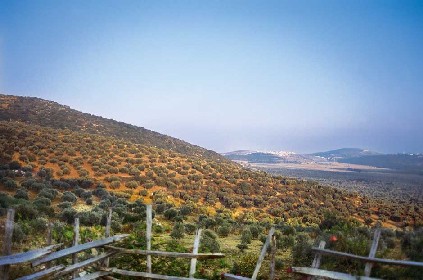
Day 5: Jerusalem
Drive to Jerusalem by taking Route 85 to Route 65 and from there
take Route 6 to Route 1. Enter the Old City via the Jaffa Gate and
visit the Tower of David Museum, whose main exhibit focuses on the
history of Jerusalem. Then walk down David Street, the main souvenir
market. Turn left onto Christian Quarter Street and walk to the
alley of Saint Helena that leads down to the Holy Sepulcher. Exit by
the small entrance to the courtyard that leads to the Muristan
Market. Walk straight ahead until you reach the busy market street
of Khan e-Zeit. Turn right and walk down the Crusader markets. Once
out of the market, turn left on David Street and make your way to
Sisileh Street. Walk down the street to the Kotel. Take the Rabbi
Yehudah Halevi steps to the Jewish Quarter. Walk to Zion Gate, walk
out the gate, turn right, back to the Jaffa Gate.
(Back to top)
Day 6: Tel Aviv
Take Route 85 to Routes 65, 77, 70, and then 2 to Tel Aviv.
Start by exploring Jaffa. Then take a taste of historic Tel Aviv by
strolling through Neve Tzedek, Rothschild Boulevard, and the
surrounding streets. Take a lunch break at one of the many cafes on
Sheinkin Street and then check out the shops along Dizengoff Street.
End the day with dinner on Ibn Gabirol Street.
(Back to top)
Amirey Hagalil
The Amirey Hagalil Spa Hotel is located in the heart of nature
along the scenic winding road that connects Acre and Safed. It is
designed to allow visitors to relax in a luxurious yet cozy
atmosphere. The design makes the most of natural elements, from the
olive tree in the lobby to panoramic windows that allow the sunlight
to enter and provide a view of one of the most gorgeous landscapes
in Israel. Amirey Hagalil has only 17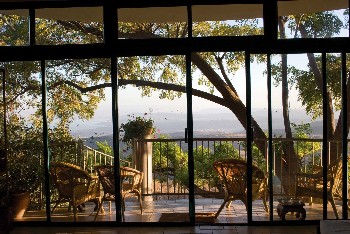 guestrooms, mini-suites, and
suites, which means that every guest receives personalized attention
from the hotel’s professional and accommodating staff. All of the
guestrooms have a private jacuzzi and porch. The spa also has a
jacuzzi, along with a sauna, resting areas, and six treatment rooms,
where guests can receive massages and beauty treatments. The house
specialty is the olive tree treatment in which olive oil is used to
purify, relax, and reenergize guests. Guests also will enjoy the
lovely gardens surrounding the hotel, where they can relax in the
shade of grapevines while sipping herbal tea. guestrooms, mini-suites, and
suites, which means that every guest receives personalized attention
from the hotel’s professional and accommodating staff. All of the
guestrooms have a private jacuzzi and porch. The spa also has a
jacuzzi, along with a sauna, resting areas, and six treatment rooms,
where guests can receive massages and beauty treatments. The house
specialty is the olive tree treatment in which olive oil is used to
purify, relax, and reenergize guests. Guests also will enjoy the
lovely gardens surrounding the hotel, where they can relax in the
shade of grapevines while sipping herbal tea.
(Back to top)
|
|